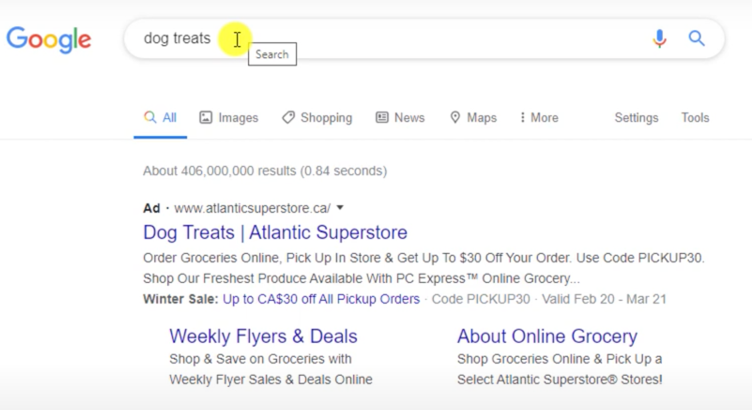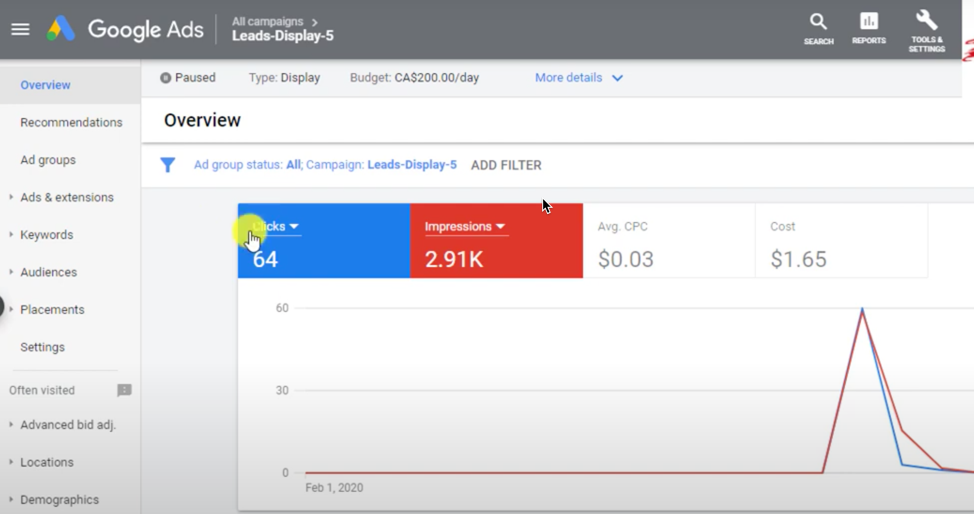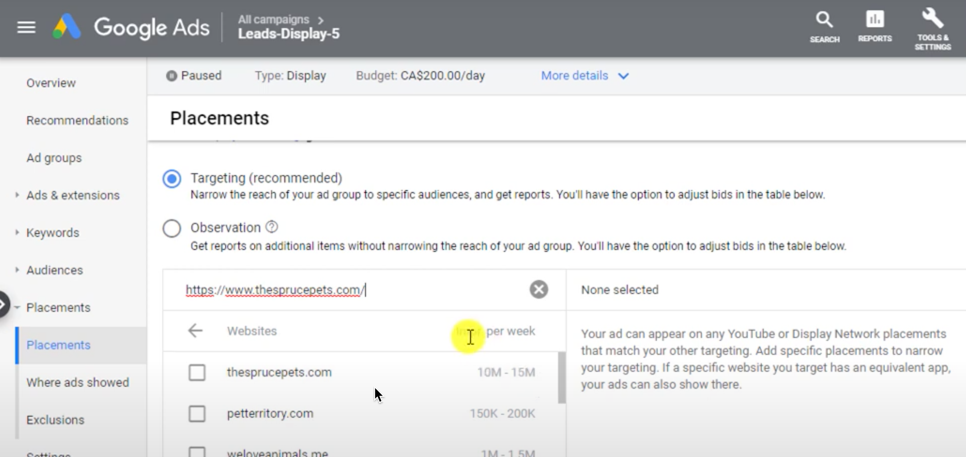The Google Display Network is a massive advertising network, which has the potential to drive a virtual tsunami of traffic to your site… if you use it properly. Today I’m going to do a quick tutorial on Google Display mistakes. I will highlight three of the biggest mistakes that people make and show you how to avoid losing a ton of money right away with your campaign.
Table of Contents
Learn From My Google Display Mistakes
I’ve spent a lot of money on Google ads over the last few years. I want to show three very common mistakes that people make with Google Display Network. I’lll also talk about the difference between Google’s search and display ads.
If you’re an affiliate, you may think that Google is cracking down on affiliates and they don’t like affiliate marketers. That’s not true at all. Google has strict rules in place, but they will allow you to run ads as an affiliate. You just have to direct the user to a content-rich website and provide great value.
Now, if you’re setting up Google Ads to go to a landing page and your landing page only has one thin page of information and no real content on your website, then you’re in trouble. Google will ban you or they will block your ads because you’re breaking the main rule, using a bridge page.

A bridge page is defined by Google as “Destinations that are solely designed to send users elsewhere”. So really, you can run ads as an affiliate, but make sure you have a quality, content-rich website.
Search Ad vs Display Ad
Google runs two main types of ad networks – search and display ads. Let’s go over the difference between the two, with some examples.
If I go to Google and I search for something like dog treats, this very high intent traffic. People that are going to the search bar on Google are specifically looking for something. They’re in the market for what they’re searching for. We call this high intent traffic, and it is more effective in terms of getting people to convert right away.
If I’m searching dog treats, this is an ad from a big store. They’re obviously happy to promote this through a search ad because I’m looking for dog treats. I’m probably not looking for anything else right now.

When they put their ads up, they’ll have really high intent users clicking on their ads.
Now, the difference between that and display ads, is when I go to Google and search how to train my dog, now I’m just looking for information. If I go to this website, how to completely train my dog, I’m looking for information and I’m not really looking to buy anything. I’m really just reading.
While I’m looking around, I might get shown some type of advertising. This is a display ad. Somebody signed up to Google Display Network and setup ads to display pet related products to people reading pet related websites.
The website owner has signed up to AdSense, so they are getting paid every time somebody clicks on this ad. The owner of the ad is paying Google AdWords to show the ad on the website. Google is essentially the middle entity between the person who bought the ad and the website owner.

The website owner is actually getting a cut of the commission. Here is the cost of the click. You can see that this type of advertisement isn’t as effective because I’m not really in the market. I’m just looking for information, even though I am a dog owner and that is a targeted ad, I’m still not really in the market.
It’s interruptive and you need to have a highly engaging ad and make sure that you test and tweak. Notice that I am also getting served an ad for a credit card, which is not even related to dogs!
Let’s talk about some of the things that you can do when you’re first setting up your campaigns. I’m not going to get too much into search ads here. They’re a totally different type of traffic where you’re setting up your ads to target keywords that people are searching in Google Display Network.
You can lose a lot of money, but you can also scale a lot more than you can with search because only so many people are searching for dog treats, and you’re going to be competing with everyone else that’s bidding on this keyword. However, with Google Display Network, there are millions of websites out there and probably millions focussed on the niche that you can target and find, and you can probably get a lot cheaper traffic.
OK, time to show you how to set up your campaign properly. I created a sample campaign just to give you an idea of some of the mistakes you can make when you set up your own Google display campaign.
Block Mobile Apps
You can see it spent $1.65. I just wanted to get a little bit of data in here so we can have an example of what I’m talking about. One of the first mistakes people make is that they allow mobile apps to eat up most of their budget and they don’t even realize this unless they’re doing in-depth tracking.

We talk a lot about tracking in our training program at PowerhouseAffiliate.com. We recommend using something like BeMob or CPV Lab Pro to track the paid traffic you are getting to your affiliate websites.
You can see inside these tracking platforms where all your traffic is coming from. You can also see it inside Google Ads but it’s just not as granular. If you want to see the click-through rates of your landing pages, you will need to use a third-party tracking platform like BeMob or one of the others.
Once you have some traffic coming in, you can click on where ads showed and you’re going to see that most of the traffic immediately started coming from mobile apps. Google is just going to feed this mobile app traffic and eat up your budget. You don’t want that!

This is likely kids playing with their parents’ phones. They’re clicking your ads and eating up your budget. Kids are basically killing your display ad campaigns. I’ve seen that saying on the Internet already and it’s true. If I give my kids the phone sometimes, I can see them just clicking ads. I have to go over and close the ad and then put the game back on for them.
So how do you block these? You go to exclusions and you can simply block. You can see I’ve already done it here just to show that you can exclude all of these apps. Unfortunately, you can’t do it with one blanket exclusion. You must actually go in and block all the categories.
You come in here, select exclude placements. Then you can come down and select app categories. I’ve actually just blocked all of the Windows phone apps and you can then show all of these categories – all 56. I’ve clicked on all of them. And don’t forget to click these arrows down, because each of these have subcategories that you also have to click. So, you need to click them all.

Once you’ve done that, do the same thing for the Apple App Store and block all of those as well. Now you’ll be blocking all of the apps. It doesn’t mean that you can’t make money with the Google Apps or app traffic. You just don’t want to have that traffic unintentionally eating up your budget.
If you’re going to try and do site placements, start your campaign and separate them. If you want to run mobile app ads only then do that on a different campaign. It’ll be a lot cheaper, but it probably won’t be as effective because it’s very interruptive. So that is the first thing you need to consider.
Be Granular
Now, the other thing you don’t want to do is put too many layers of targeting into your campaign. It’s important to target by keyword. You can enter in dog treats again; I can say anything related to dog treats and people. Google will look at what people have been doing in their past browsing history. If they’ve been searching for dog treats or if they’d been visiting dog treat websites, then they’re going to likely see your ads.
You can also target audiences, for instance pet owners. Google will try and find websites that are related to that audience. You can set up demographics, like where they live. Then you can set up specific ad placements. For example, if I find a dog training site that I want to advertise on, I can target that specific domain just by going to the placements setting.
I think when you are first starting out, it’s better to be granular, especially if you don’t have a large budget. It’s probably best to go out and pick 15 to 20 domains that you think would be great to advertise on or would have the audience that would be interested in what you are selling. You’ll find that if you give Google the option to just pick what websites they want to put your ads on, most of the time, you’re going to see a whole bunch of irrelevant websites in your list of where your ads actually showed.
If you are starting with a small budget, you want to go in and just slowly and carefully pick website placements. Do that through the placements. Going back to our dog training example, I would select my ad group and then I can add a website right here.
You can see TheSprucePets.com is estimating about 10 to 15 million impressions per week, which is quite impressive, actually. I would never have expected that, but you can see how great it is to be on the first page of Google when you’re doing search engine optimization. All I did was search “how to train my dog” and this person’s website showed up.

It’s obviously a very large website. Ten million impressions a week is very impressive. If I want my ad to just show here, let’s say I’m selling pet CBD, which is something that is a new product. I’m not sure if that would be compliant with Google ads, but if you wanted to, you could put your ad on this Web site. Now when people come here, they would see your advertisement for the pet CBD.
If they click on it, they go to your landing page for more information.
So that is the second thing to focus on. Start granularly and then increase your scope, because Google will eat up your budget so fast, you can blow it within minutes.
Use a Low Bid
The last thing I would recommend is use a low bid, even if you are blocking the default placements, and going with very targeted ones that you’ve handpicked yourself. Start low and then scale up. If you go too high, you are going to blow again your budget, sometimes in minutes, sometimes within an hour.
Once the ads are approved, it just blows past, and it’ll actually go over your budget. So, if I set $200/day, it could go up to $300 total and then it would stop. They don’t have enough control to stop the blast of traffic that you’re going to get. The lower your bid, the better when you’re first starting out.
A couple more things to consider when you’re running Google display ads is once you find some really good placements, separate them into different campaigns or different ad groups. Test multiple landing pages. You’re going to find that your click-through rates are a lot less with Google display ads. So, make sure you have a bunch of landing pages and test, test, test.

With Google, you have to use parallel tracking, which means you can’t use redirects anymore. You can’t use your tracking links from your BeMob or CPV lab. You have to use parallel tracking, which they have capability to do but now you have to test one page per ad group unless you set up experiments. That’s more advanced stuff. We cover all of that in our training at PowerhouseAffiliate.com.
If you want to see actual live campaigns where I’ve shown the ads, shown the landing pages, shown everything about it, we have a Google ads case study inside PowerhouseAffiliate.com. Go there, sign up for free and get the premium membership if you want access to the case studies that show real life campaigns running right now. You can find more in-depth training, including more advanced strategies to avoid mistakes when setting up Google Display ads.
- How to Make $1000 a Day With Google Ads Affiliate Marketing – Ultimate Guide - October 10, 2023
- Ultimate Guide to YouTube Shorts Ads for Affiliate Marketing - December 23, 2022
- How To Start Affiliate Marketing For Beginners [Ultimate Guide 2023] - December 21, 2022
